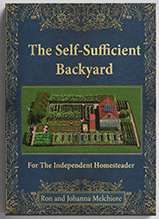Growing plants in a greenhouse for the small organic grower February - Scott getting ready for growing plants in a greenhouse February - Scott getting ready for growing plants in a greenhouseGrowing
plants in a greenhouse is an excellent option for the small organic
grower. Because the growing area is enclosed, it's possible to manage
soil, water and potential pests much more closely than in the outside
garden.
Each of my greenhouses has paid me back many times over in the value of crops they produced. I'll be building a new one in Spring 2025 to expand this capacity. Growing Plants in a Greenhouse - Crop Choices
 growing early crops in the greenhouse growing early crops in the greenhouseRight after the tilling picture above, I started turnips, carrots, beets, and bunching onions in raised beds in my greenhouse. These crops are cold-hardy and will stay there until harvest in June. These crops also do very well at my early market; I am usually the first grower to have them for sale and I get a nice price premium. I can usually sell all that I can grow. You might want to check out Grow The Top Ten for more about growing these crops. I have also started broccoli and cabbage seeds; these seedlings will be transplanted to the outdoor garden in mid-April. The hardy broccoli and cabbage seedlings will be able to survive with just row cover protecting them at that time. Once the early crops are harvested or transplanted, you can add some compost to the beds and plant later crops. For example, when my broccoli and
cabbage seedlings are transplanted to the outdoor garden in April, I can
replant those beds with tomato, pepper and cucumber transplants that I
grew in my (smaller) heated greenhouse.
The tomatoes are trained up a line secured to the cross-pieces of the hoop house.  About 90 days later my greenhouse is fully planted About 90 days later my greenhouse is fully planted
Our greenhouse to garden workflow
 This is the workflow from seed starting to growing plants in a greenhouse to the garden This is the workflow from seed starting to growing plants in a greenhouse to the gardenDepending on the crop, the 'workflow' of plants might be from heated greenhouse to unheated high tunnel, or heated greenhouse to the outdoor garden, or unheated high tunnel to the outdoor garden. The secret to efficient growing is to figure out the sequence that works best in your circumstances, for each crop. If you are think about building a hoop house of your own, check out these two resources. In Canada, I've used Harnois Greenhouse for many years to buy my greenhouse plastic cover. In the US, Bootstrap Farmer offers a DIY Greenhouse Kit in a range of sizes that come with the poly plastic cover. You can read my hoop house kit review here. Bootstrap Farmer also offers a market gardener seed starting bundle that's a good choice for the small market grower. Other links of interest
This is a pretty good article about Urban Survival. You might also want to up your self-sufficiency game with my Homestead Book Bundle And, because there is more to self-sufficiency than just food, here's a resource with literally HUNDREDS of great tips and low-cost projects for your homestead. The Self Sufficient Backyard. Highly recommended. Bootstrap Greenhouse Our latest Bootstrap Book will show you step-by-step how to build a greenhouse and use it to best advantage your small farm. We include plans and directions to build each of the 3 greenhouse designs we use on New Terra Farm - all for $10! If you have ever wanted to up your gardening game with a greenhouse of your own check out Bootstrap Greenhouse here. Another one for the backyard growerI didn't write this one, but it's an excellent resource for the homesteader or small property owner anyway! The Self-Sufficient Backyard has literally hundreds of plans and practical tools and techniques for the serious homesteader.Written by a couple who have actually done the work. From growing food, to medicinal herbs, solar electricity, root cellaring, growing small livestock, and selling select produce as a side hustle, plus many more money-saving and money-making ideas, this book is an encyclopedia of growing and building knowledge. A must-have in your homestead library. I only write about topics I have personal experience with. The authors of The Self-Sufficient Backyard have done the same. Highly recommended!
|
See Something You Like? Share!
Got questions to ask, stories to tell?
Share your organic market gardening question, or comment, or story.
I'm an affiliate for some products I promote on this site. This means I get a small commission for a product you buy through a link on one of my pages. This doesn't cost the buyer anything, but provides me an additional income to help support these pages.
Recent Articles
-
Farm grown reviews of products recommended by New Terra Farm
Dec 04, 25 06:26 AM
Find great farm and garden products in my farm grown reviews -
Best Chicken Coop and Accessories for Small Farms and Homesteads
Nov 30, 25 09:18 AM
Looking for the best chicken coop? Here are the top coops, accessories, nest boxes, and gear to build a safe, productive poultry setup. -
Community Supported Agriculture Marketing Ideas To Sell Out The Season
Nov 05, 25 05:18 AM
Authentic Community Supported Agriculture marketing ideas to grow loyalty, boost sign-ups, and sell out your CSA every year







